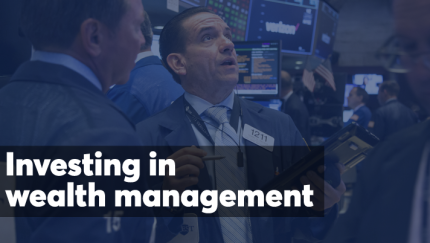The sell-off in U.S. stocks accelerated Thursday with the Dow slumping as much as 618 points, one day after the average posted its worst day since February.
The S&P 500 fell more than 2% for a second straight day and is now in its longest slide since 2016. The Nasdaq’s losses from an August record reached 8% and the Dow lost 546 points. All of the measures slumped below their average prices for the past 200 days.
The S&P 500 is at a three-month low after a 6% slide in what’s the longest slump of Donald Trump’s presidency. Energy shares bore the brunt of selling after oil plunged by 3%. Financial firms contributed most to losses, with banks and insurers down at least 2.5%. The Nasdaq surrendered an earlier rally and added to its 4.4% decline on Wednesday. Trading was heavy with volume surging roughly 65% above average for this time over the past 30 days.

“Volatility is back and it may require more active strategies on the part of investors to pursue their long-term goals,” John Lynch, chief investment strategist for LPL Financial, wrote in a note to clients Thursday. “Volatility is also not to be feared, but embraced, as varying data points will cause bouts of market anxiety. But remember that fundamentals are still strong.”
-
As advisors, we are supposed to be the calm in the storm for our clients — let’s make sure our messaging does that quickly and effectively.
February 5 -
Getting clients to understand how volatility is an essential part of investing isn’t easy, but is even harder when stocks had been in the midst of an uninterrupted bull run.
February 5 -
It’s time to broaden our understanding — and assessment — of risk composure.
February 2
In addition to energy, insurers and household products manufacturers weighed on the market, while media companies and software makers were among the few bright spots. The CBOE declined but remained close to its highest level since April.
“This is just a normal run-of-the-mill correction that happens to be concentrated in some of the more expensive and most notable names in technology,” said Jamie Cox, managing partner at Harris Financial Group. “But I think it’s been precipitated by the uncertainty about global growth and whether or not Fed policy is going too far too fast.”
The crash of 2008 was intense but, in hindsight, short-lived. Market gains began a few months afterward and have continued with few exceptions.
Investors seeking to pinpoint the cause of the current rout in equities have no shortage of culprits: U.S companies are increasingly fretting the impact of the burgeoning trade war, while the same issue prompted the IMF to dial down global growth expectations. In the tech sector, which was a key driver of the rally that pushed American equities to a record just a month ago, expensive-looking companies have been roiled by a hacking scandal.
Against this backdrop, the Fed has been trimming its balance sheet and raising interest rates, provoking President Trump and helping force a repricing of riskier assets.
“What you’re seeing right now is a bit of a panic — we wouldn’t say this looks like the end of the cycle,” said William Hobbs, head of investment strategy at Barclays Investment Solutions in London. “You’ve got to try to keep the skin in the game for as long as possible because it’s an incredibly profitable period of the cycle to be invested through if you can keep your nerve.”






